 |
 |
 |
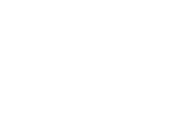
|
GlazenHuis, Whereabouts, 2016
Photo:
Kristof VRANCKEN
|
|
 |
WHEREABOUTS
27/3/2016-4/9/2016
Curated by HYPEROPIA PROJECTS ( U S )
GLASS ART CURATIONAL COLLECTIVE HYPEROPIA PROJECTS
investigates the ‘whereabouts’ of glass artists
In 2012, I met Alexander Rosenberg, one of the laureates of the first edition of the International Glass Prize. At the second edition, three years later, I met laureate Matthew Szösz.
With Helen Lee, these three - in addition to their activities as artists - make up a curatorial collective which is joining forces to broaden the limited glass field: ‘The expanded field of glass’. Through critical discourse with artists, experts in the field, academics and historians this group evaluates and promotes the evolution of the discipline of ‘glass art’; a mission seamlessly complementing the vision of the GlazenHuis.
These three members studied together at the Rhode Island School of Design (NY), or the acronym RISD (say: Riz-Dee), which might have the world’s most important glass department, as reflected in the impressive list of relevant artists including veterans Dale Chihuly, Howard Ben Tre, and Therman Statom, but also Josiah McElheny and Roni Horn.
But in the meantime, this young collective is looking ahead and beyond under the name Hyperopia Projects (HP), referring to the eye condition hyperopia or far-sightedness. We might interpret this as a reference to how we see (glass) art.
The title of this exhibition Whereabouts also contains a significant stratification. First of all, the term ‘Whereabouts’ may show a link with the information provided by top elite athletes about their location, as part of doping controls.
Within this exhibition we prefer to look at the artists’ whereabouts:
Where do artists live? In which familiar or new environment do they work? How do they cope with this context?
How does this relate with their roots, their cultural, ethnic or religious background? And how do they travel in the international field of art?
The metaphorical migration of the artist - who evolves from a trained glass artist into a free visual artist - is also elucidated.
Finally, we ask ourselves how performance artists get acquainted with the material of glass. Therefore, the New York sound artist John Roach was invited for a residency at the GlazenHuis. His study resulted in a performance by the well-known Lommel drummer Davy Deckmijn (Zornik, Hannelore Bedert et al).
Jeroen Maes
Artistiek directeur GlazenHuis
|

|
Posted 3 June 2016
|
Share this:
|
|
HYPEROPIA PROJECTS
@ GLAZENHUIS
Contemporary glassmaking is an inherently dislocated practice. To work with glass is to associate oneself with a tradition that is no longer a relevant part of culture. In so doing, practitioners voluntarily subject themselves to a sense of alienation. Artists navigate the displacement of their craft in contemporary practice with processes that embrace unorthodox methodologies. The resulting work employs mechanisms of reconfiguration, disembodiment, and subversive misappropriation. Tradition and reverence for a material is balanced by approaches that are hybrid, other, and preternatural. These mutations function as microcosms of the discontinuity of our social fabric - oscillating between the familiar and alien.
Glassmakers today engage in a practice that has lost its place in contemporary culture. As a group who takes primary identification from their material of choice itself, glassworkers inherit a problematic relationship with contemporary society before issues of personal interest are even addressed. Glassmaking’s historic links to utility, and commerce have been severed. Art promises to free the material from the functionality of the vessel, yet artists still gravitate to the training, process and knowledge base of the traditional glassmaker. Caught between contemporary art and traditional craft they seek to create new paradigms through which to create.
The current generation of artists has not abandoned the obsession with skill and technical complexity, but have moved beyond the need to exhibit the proof of such expertise as an end in itself. This community of contemporary artists still chooses these archaic traditions as a base for their artistic practice. This choice to live in both the present and the past at once creates inherently conflicting aims, and raises questions that speak to the basic viability of the practice.
This show examines some of the strategies that today's glass artists employ as they seek to establish a personal identity through a practice that embraces both contemporary art and traditional craft. They are caught in a conflicted position, moving between high and low, the past and present.
Just as these artists reimagine their place between two seemingly disparate worlds, they create a multiplicity of definitions of what glass art can be. They hybridize, deconstruct, subvert, disembody, cross-pollinate, and misdirect as they merge and cross genres. These efforts offer us a window into the rapidly changing culture at large-perspectives that move between the familiar and the alien, and encompass
GLASS AS FLUID
Phenomenal qualities associated with glass often prevail as the artist’s muse over a blind devotion to the literal material itself. Water - universal and elemental - arises as an important sister material to glass. The works of Yuka Otani, Hiromi
Takizawa, and Carina Cheung re-frame the artist’s medium here not as glass per se, but more broadly as transparency, fluidity, and light. Yuka Otani’s’s subdued Parallel Visions brings our focus into the scale of minutiae, as a drop of glass sits beside a drop of hard candy. The drops mirror each other, but more curiously, both drops mimic the behavior of a drop of water on glass. The expression of surface tension in this work transcends the literal materials at play and complicates our understanding of what we call “glass.”
Hiromi Takizawa’s meditation on water in Flow of Light transports us to a waterfall in the wilderness of Nagano, Japan. The artist has captured the visual noise of a waterfall as filtered through the device of an old camera lens. The video pulses back and forth between a clear, macro- image of water droplets in motion and an image self-consciously distorted and blurred through artifacts of lens flare.
Similarly, the video bounces through the space as solid glass spheres scattered around the floor function as optical lenses through which our vision encounters an ephemeral reading of glass-as-water-as-light.
Given the seductive nature of working with glass in its molten state, it is not surprising to see water arise as a way in which glass becomes other. It is as though these artists are invoking a memory of the material in its molten state through our universal experience of liquid. In the case of Carina Cheung, there is a sense in which the parameters that define her as a glass artist become disoriented in Floating Under the Midnight Sun (p.50). Cheung subscribes to the lineage of glassmakers that has devoted their lives to internalizing the precise mechanical movements that embody this craft. The practice of immersing herself in shaping vessels has, in turn, shaped her body. And yet, in her work, we see the vessel of her body floating in Arctic waters for as long as she can endure before her own physiology begins to shut down. How does one plumb a line from the practice of glass to this sort of an extreme exercise in endurance? Can we accept a much more profound way in which fundamentally “glassy” issues of liquid, breath, skin, the body, and the vessel - have permeated her outlook as an experiential, living bod
GLASS AS BREATH / SOUND
Inherent to the process of glassblowing is making visible the invisible, giving physical form to human breath. Like the bodies that manipulate it, glass expands and contracts as it moves from molten to solid states. With breath comes sound, language and communication and several of the artists in Whereabouts draw from this connection.
With the installation Cuttlefish (p.15), Chris Duffy covers glass with rubber balloons, challenging us to perceive a visually dazzling material with our other senses and treating the static material as if in a fluid state. Viewers watch carefully ground faceted geometric forms slowly puff up into soft, round shapes, and hiss audibly, simultaneously evoking the breath of a simple organism and the breath used in their creation.
Bohyun Yoon’s diverse investigation of seeing the unseen is perhaps best represented in a series of work where he cleverly pairs the sonic with the visual. With rhythm and melody, Yoon pairs the sound of glass with engaging visuals, creating a synesthetic experience where we see, as well as hear, the sonic properties of the material. (p.46)
Similarly, through performance, sound and video John
Roach orchestrates the design and fabrication of a series of objects to be played by a percussionist in a site specific work created for the GlazenHuis. The resulting glass objects were destroyed in the process of being played, and the remains were displayed chaotically, left exactly where they fell at the close of the performance, serving as a visual record of the process by which the fleeting sonic work was made. In this instance, a landscape of fragmented glass objects functions as a recording of a time-based event, a way to visually access information normally invisible. (p.59)
Ben Wright offers viewers the lens of a microscope to view a world in tiny glass slides. The visual language of his installation is steeped in scientific authority but through the viewfinder we are presented with purely decorative specimens.
What happens when we become aware that the lens is designed? When the viewer is a child?
Where Wright asks us to question conventions of scientific objectivity, Anthony Cioe rewards our careful observation with a secret. Invisible on the surface of the glass of Bottle Map a spot light reveals a map that exists only as a shadow. The map reveals the site where the artist discovered an antique bottle which he has carefully recreated.
Cioe uses glass subtly, revealing worlds layered on top of one another, visible and invisible, playing with the our collective expectations, curiosity and delight.y in this world?
GLASS AS DISPLACEMENT
We see artists using glass as an agent that transports us to unexpected spaces-displacing the viewer from the familiar into the unfamiliar. Both Keith Lemley and Rui Sasaki’s work expand and contract our understanding and experience of space. In Lemley’s case, Arboreal (p.42) is a conversation that began with a centuries-old tree that fell near Lemley’s studio. Lemley turned to carving the wood after a long stretch of daily encounters with the tree in its fallen state. This experience of moving through hundreds of layers of organic growth encoded in the material of the wood is extended into an installation of neon emanating from the lines and geometry of this specimen. Here, glass functions as a counterpoint to the wood. The stark contrast of the sterile, white glow of the argon-filled tubing sets up a certain vibration-viewers find themselves immersed in an imagined space of possible arboreal futures.
Sasaki’s Corners (Home) functions in the opposite direction, collapsing 52 corners of her home into a scattering of black cast glass “corners” at the viewer’s feet. These black pyramids of glass rise just barely from the surface of the floor. We might imagine the volumes they define lying just below the surface of our perception in an overlapping and scrambling of personal space. Sasaki invites viewers to pick up these physical objects she has made of uninhabitable empty spaces. Doing so reveals text that details the qualities of the specific corner of Sasaki’s home this object embodies. The dense, dark quality of the glass and the playful game we play in turning them over elicits a sense of disorientation and the unknown in this work. Sasaki brings to our attention some simple conundrums that render our experience of conventional, rectilinear spaces we call home as somewhat alien. How is it that the spaces we build to accommodate a human body are punctuated and defined by these corners that our bodies cannot inhabit?
Chad States’ explorations of the physicality of urban life focus on objects which express the bitter of the modern experience from a crisply defined point of view. He juxtaposes the joys and intensity of the nightlife with the corrosive gritty friction of the urban environment through the physical qualities of the objects he photographs and displays. This personal exploration both defines and communicates the difficulties of his own identity, and invites the viewer to contemplate both the joys and waste of modernity. In Shimmer of Possibility (p.45), he produces dazzling spectacle, a sparkling pile of precious gems, a street level disco ball, from the shattered windows of cars that have been burglarized on the streets of Philadelphia.
Hillary Wiedemann’s Grey Area (p.38) uses a form of glass that is also native to the urban landscape. Glass microbeads are an obscure form of glass most commonly found added to the painted lines on a road to increase reflectivity. Grey
Area uses a “retroreflective fabric” tkunthese small spheres of reflective glass. Wiedemann works with this material in the vocabulary of a painter, stretching it as a canvas. A glowing, illusionistic surface appears, at once painterly and sculptural, seeming to float above the surface of the canvas. A mirage-like shimmer of light, which eludes photographic documentation, appears only through the movement of the viewer passing before it. The resulting effect dislocates material native to industrial processes, creating a sublime optical experience.
GLASS SUBVERSIVE
Subversion has a long history in the arts of all varieties. It is a time honored tradition for artists to tweak, invert, and critique the expectations of both the audience and the prevailing stereotypes of their genre, and of the larger culture.
For some artists the route to establishing a personal identity comes through this dissent and non-conformity, defining themselves as much by what they refuse to be as by what they are. By challenging the perceived status quo the work of these artists inspires surprise, humor, and critical thought, and defines the road less travelled.
CUD is the punk rock of glass blowing - intentionally crude, disruptive to the status quo, and filled with energy. While both John Drury and Robbie Miller, CUD’s component parts, are employed professionally as highly skilled glass workers, the output of CUD subverts the slick assumptions of studio glass, producing the intentionally rough, cartoonish, and deadpan objects CUD is known for. Having mastered the craft of glassblowing, they have proceeded to the next logical step: they disregard it. Operating in favor of a looser, freer approach to expression, utilizing chance, situation and found or recycled objects they return the emphasis of their pieces to creativity, concept, and artistic license. The humor, energy and immediacy of the objects they produce launches guerilla attacks against the stiff prettiness and preciousness of the staid production of glossy symmetrical forms.
With works such as STUMP (p.24), CUD invites the viewer to reconnect with the humor and freedom of a childhood sketch and shift the purpose of glass making from work to play. CUD makes it clear that technical precision matters less than the originality of creation, and the raw energy of making, and for all their rebellion, they just as clearly enjoy the material they so profligately employ.
Dylan Palmer engages in an appropriation and recombination of familiar objects, transforming them physically through the processes of glass working into works that invite us to reinterpret our understanding of the original objects in a surrealist and non sequitur rearrangement of context and familiarity. Palmer’s visual innuendos visit both high craft and low humor as he transforms the crude, low-brow, and disposable into the luminous and highly refined with a technical mastery so casual as to at first remain unnoticed.hat is embedded with In Mountain the viewer encounters a pristine object atop a mirrored pedestal with all of the pomp of the familiar museum setting. It is only upon closer inspection, perhaps as the viewer’s reflected image merges with that of the object on the pedestals surface, does the nature of the object become clear, setting off a chain of associative reactions.
Similarly, Palmer’s Rebar series expresses a similar, if simpler and more immediate dichotomy between the formal and aesthetically pleasing work and its perversely
pedestrian subject matter Zac Weinberg is drawn to the absurd within the everyday, examining the effects, side-effects, and unintentional consequences of the collision of traditions, forms and modern needs. Working in a Rube Goldbergian mode with deliberately redundant or contradictory systems he questions the value, utility and efficiency of invisible aspects of the infrastructure on which we rely. Concept for Modified Chandelier offers an absurd alternative to the modern luxury
lighting, aestheticizing and revivifying the waxen drips of traditional chandeliers through the introduction of a dripping latex paint-can. This visually disharmonious but functionally hypertrophic element is employed to “re-virulize” the modern chandelier following its neutering at the hands of the electric bulb, allowing it to once again spill its seed across the floors, tables and chairs of our modern dining chambers.
While not actually a glass piece per se, Lika Volkova and Caroline Woolard’s Work Dress 2.0 addresses and critiques a crucial determining factor in the shaping of the modern public understanding of contemporary glasswork.
As an object which starts from the question of the economic viability of its creation, Work Dress 2.0 recognizes that no work can be created without somebody paying, and embraces that payment as its raison d’etre, existing only to be traded for the work of other artists, in this case, being exchanged for the glass shop labors of the curatorial team.
This subversion of the economic structure of art production attempts to get at a vital point: the power that money exerts over the artist’s ability to produce, dictates what work is made, seen, and promoted. This structure is antithetical to experimentation and growth, instead supporting cyclical patterns of repetition. Work Dress 2.0 introduces an alternative economic structure to this stalemate.
METAPHOR
Material experimentation brings with it a tendency towards serendipitous anthropomorphization. Corollaries, both physical and connotative, creep into any exploration of the unknown as easily as clouds beget imaginary white rabbits.
But often enough, these discovered analogies can create reflections powerful enough to cast strange light back upon the inferred subjects, highlighting or altering perceived relationships through their own efficient redefinition. For certieve tain artists, seeking these moments of direct commentary within the material can define a particularly insightful practice, where moments of objective truth balance suggestively
against implied metaphor, and allow an eccentric view of our own hilltop.
Trish Roan has displayed an exceptional talent for the utilization of material and juxtaposition of physical content with emotional and intellectual context, of which the work Pearl is a prime example.
Exploiting the lost wax technique to mimic the natural accretion and polishing action of the pearl producing oyster, Roan makes transparent the smothering process of beautification. We can easily feel empathy for the screw at the center of the work, its form softened and reshaped into an object both more aesthetic and less individual by repeated contact with a blanketing environment. Each slow degree of transformation is made visible as the object loses its identity to a conforming ideal.
Though trained as a glassmaker, in Stranded Between One Act and Another (p.34) Jes Fan emphasizes glass-specific themes over the material itself. In this case, it is suggestion of the absent mirror, by the doubling and physical connection between the two hairbrushes, that asks viewers to consider the hybrid, the doppelganger, but also the thwarted, the trapped and the inescapable. Caught in recursive relationship the two hairbrushes offer no release, simultaneously binding and being bound by the hair that unites them.
Michael Scheiner’s fused, dual careers as an artist and an educator demonstrate a restlessness and curiosity paired with a pursuit of virtuosity for its own sake. His constant need to discover and understand has caused him to explore, and master, a wide range of technique and functionality across many glass types, but always with an eye for the intersection of the physical and the poetic. Scheiner’s work continually pairs his experience of the material with his experience of being, drawing correlations between object, process and emotion that are startling in their subtlety and effectiveness. Noctilucent (p.57) manages to make visible the physical struggle of incompatible glass bodies while at once retaining a perfection of form - an object under great stress, but unable to physically separate from the cause of its trauma, nor shed its conjoined identity. Mask (p.41) subverts the usual expectations of the material to create a technically complex and carefully constructed form that connects us directly and uncomfortably to our own internal structure.
Edison Zapata has a long history of misunderstandings. Born in Venezuela, raised in Australia, and trained in Japan before relocating to the United States, cultural re-orientation and linguistic change have been the constants of his peripatetic life. The work he produces reflects the impact of these experiences. The tear shaped primary of Lagrimas de Marfil meanders along a path created by its own shape, and imprints the paper it traverses with partial and unclear images of the cultural ephemera etched into its surface. Its own identity, in the form of shape, is the dictator of both the path it travels and the image it leaves behind – as well as the misunderstood and incomplete images created by its passing.
The collected artworks in Whereabouts ask us to consider glass as a way of working: a holistic practice more than a single material or technique. Today glass artists are working across media and processes, using glass as a starting point: a way of thinking and a sensibility that can be applied across topics, across materials. They find glass in the fluid properties of water and sugar; discover it hidden in high-tech fabrics and littered throughout city streets. They use glass as a way to see the invisible, to access and organize complex sensory information and to question assumptions of scientific authority. In their hands the material becomes a critical lens - a tool for the subversion and reflection of society, self-image, and its own tradition.
The discipline and sensitivity engendered by the pursuit of craft in one of its purest and most challenging forms provides a distinct foundation for the understanding and approach of the contemporary glass artist. The demands of the material are such that each artist must negotiate an individual relationship with it, and in so doing, discover and populate nnew thematic and disciplinary locations.ew thematic and disciplinary lo
© HYPEROPIA PROJECTS
Helen LEE, Alexander ROSENBERG and Matthew SZÖSZcations.
ARTISTS:
Carina CHEUNG (HK/US/IT)
Anthony CIOE (US)
CUD (US)
Christopher DUFFY (US)
Jes FAN (HK/US)
Keith LEMLEY (US)
Edison OSORIO ZAPATA (VE/US)
Yuka OTANI (JP)
Dylan PALMER (US)
John ROACH (US)
Trish ROAN (AU)
Rui SASAKI (JP)
Michael SCHEINER (US)
Chad STATES (US)
Hiromi TAKIZAWA (JP/US)
Hillary WIEDEMANN (US)
Zac WEINBERG (US)
Lika VOLKOVA & Caroline WOOLARD (UA/US & US)
Benjamin WRIGHT (US)
Bohyun YOON (KR/US)
|
|
|
|
|

|

|

|
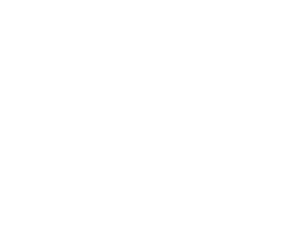
Cuttlefish ( 2 0 1 2 / 2 0 1 6 )
Blown and cut glass, latex balloon, silicone tubing, air pumps
Dim. Variable
Photo: Kristof VRANCKEN
|
|
Christopher DUFFY ( U S )
1980, California
Cuttlefish takes its inspiration from two separate experiences.
On a late night I was walking in a city. I stood for a moment to observe a large building under construction, covered with scaffolding, which was then covered in a giant tarp the size of the building. The wind was catching the tarp and billowing it out into a giant pillow like form, but every now and again the wind changed directions, pulling the tarp back against the scaffolding, pushing or sucking it up to and into the rigid grid structure, then back out again. Later, I came upon a small faceted crystal sphere, the type that might hang from the lower reaches of a chandelier. I kept it in my coat pocket for a while, and one day after blowing up thousands of balloons, I shoved the crystal through the mouth of a deflated balloon. I was surprised that the tiny facets of the crystal were still readable through the skin of the balloon.
Somewhere along the way, these two ideas came together into one object that breathes and appears to have a life of its own. This piece represents a practice that attempts to digest the eccentricities of our material world and ephemeral culture, and share them with others.
Biography
Christopher Duffy received a Bachelor of Fine Arts from Cleveland Institute of Art in 2003. Having developed a strong connection to Cleveland he remained there for three years, working alongside artists Brent Young and Mark Sudduth at Benchmark studio. In 2006 he relocated to Brooklyn New York where he currently resides. He has worked with and fabricated glass objects for artists Josiah
McEllheny, Michiko Sakano, Jeff Zimmerman, and Linsey Adelman, among others, as well as working Music artist Girl Talk (Gregg Gillis), fabricating and operating onstage visual elements and props. He was the assistant art director on the short lived cult classic Independent Film Channel television series Food Party, created by
Thu Tran. In 2014 he began collaborating with music duo Eaters
(Jonathan Schenke and Bob Jones), and continues to make memorable visual effects and elements for their live shows, as well as making sound sculptures and installations under the Eaters umbrella. He has been awarded fellowships by The Creative Glass Center of America and Starworks, and recently taught at The University of the Arts in Philadelphia. Christopher continues to make glass and mixed media artworks and has exhibited throughout the United States, and Europe.
|
|
|
|
|

|

|

|
Edison OSORIO ZAPATA ( V E / U S )
1970, Caracas, Venezuela
www.edisonzapata.com
This “printstallation” resonates with identity and translation. Lagrimas de Marfil – (Tears of Ivory) is a printing installation from a blown glass object to paper, using offset printing ink. I explore the mechanics of printing from a three-dimensional form onto paper, which manifest themselves in a residual mark that translates the identifying characteristics of the form used into the printed image.
In previous work in the same vein, I have used mainly text with some imagery, holding to a more literal correlation with translation of language, culture and the written word. In the past I have worked with more cylindrical forms which reveal a more decipherable printed image.
Lagrimas de Marfil uses ivory glass not unlike bone and a more animate, organic shape thus printing cryptically with moments of clarity that are connected by undecipherable but recognizable marks of identity of this strange but familiar shape. In the glass I have rendered imagery - photographic snapshots of my past that I use to illustrate my own identity through the act of marking.
I create work derived from my own experience as a foreigner.
As a Venezuelan who has lived in Australia, Japan, and the USA for extended periods I experienced dislocation and assimilation while absorbing cultural changes. Though at times difficult, this process has provided me with three languages - Spanish, Japanese and English - and an evolved foreign perspective that is a driving force in my artistic practice. I am interested in the nature of failed communications and in the ways comprehension becomes distorted by cultural misunderstanding. I create work that captures the imprecise transfer of information between people from different walks of life.
|
|
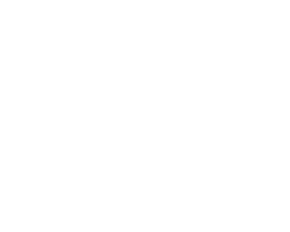
Lagrimas de Marfil ( 2 0 1 1 )
Blown glass, monoprint on paper
Paper print dim. 150 x 100 cm, Glass dim. 38 cm
Photo: Koen Vrancken
|
|
|
|
|

|

|

|
Anthony CIOE ( U S )
1981, Barrington, RI
www.anthonycioe.com
Through mold-making and glassblowing processes, Cioe re-created a broken bottle he excavated from an old refuse site in Providence, RI. The clear hollow sphere fused to the mouth of the bottle is a direct result of the object’s making and process of blowing glass into a mold. A photo-etched map and bull's-eye mark the location the object was found. As the bottle lies flat, the shadow of this map transfers to the surface below.
Biography
A desire to construct what has been lost over measures of time continues to be my primary impetus. Looking for the spaces in between things, I create sculpture and installations that transcend static objects beyond their corporeal existence, engage in the process of entropy, and often attempt to negate it.
Anthony Cioe is an American artist who lives and works in Brooklyn, NY. Cioe's studio practice encompasses sculpture, drawing, photography, printmaking and installation. The work explores a variety of subject matter such as entropy, appropriation, ubiquitous objects, and museum conservation. He earned a BFA in 2003 from Rhode Island School of Design in glass and an MFA from Virginia Commonwealth University in 2008. He has shown nationally at Architectural Artifacts, Chicago, IL; Anderson Gallery in Richmond, VA; Crane Arts in Philadelphia, PA; Delaware Center for Contemporary Art in Wilmington, DE; John Michael Kohler Arts Center in Sheboygan, WI; Reynolds Gallery in Richmond, VA; Real Art Ways in Hartford, CT; Steuben Galleries and The Boiler in Brooklyn, NY among others. His work is held in public and private collections including Summit Executive Center in Chicago, IL; The Museum of American Glass in Millville, NJ; Kohler Co. and John Michael Kohler Arts Center in Sheboygan, WI. Awards include a St. Botolph Club Foundation Grant, Creative Glass Center of America Fellowship, Kohler Arts/Industry Residency in Pottery (2006), Foundry (2014) and Corning Museum of Glass Residency 2015.
|
|
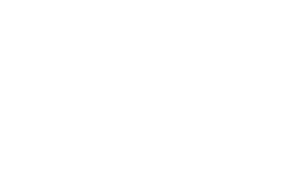
Museum of Glass Residency 2015.
Bottle Map ( 2 0 0 4 )
Mold-blown and photo-etched glass
Photo: Koen Vrancken
|
|
|
|
|

|

|

|
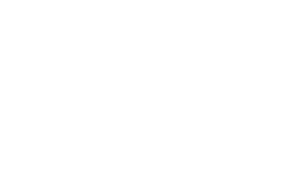
Parallel Vision ( 2 0 1 5 )
Glass, isomalt
Dim. 1 x 30 x 30 cm
Photo: Koen Vrancken
|
|
Yuka OTANI ( J P )
1978, Tokyo, Japan
www.yukaotani.com
Parallel Vision consists of a pair of small clear glass and hard candy droplets of identical size. Both objects mimic the properties of water, simultaneously revealing links between materials that are essentially different
Biography
Yuka Otani is a visual artist originally from Tokyo, Japan. She received a master’s degree from Rhode Island School of Design, and a bachelor’s degree from Tama Art University in Tokyo, Japan. She has participated in numerous artist in residence programs including Corning Museum of Glass, Pilchuck Glass School, Creative Glass
Center of America at WheatonArts, Museum of Art and Design, Kio- A-Thau Sugar Refinery Artist Village, and Akiyoshidai International Art Village. Her work has been exhibited across the U.S. and Japan.
Yuka Otani’s creative explorations focus on embracing unique characteristics of transparent materials, primarily glass, hard candy, water, and light. She loves the elusiveness of the materials, and how they are poised for change. With a multi-disciplinary style of studio practice she has been working in the crossover fields of fine art, design and science.
|
|
|
|
|

|

|

|
Rui SASAKI ( J P )
1984, Kochi, Japan
www.rui-sasaki.com
This project is an exploration of my private space through casting corners with black glass. I cast glass in 52 corners of my private space. There are actually 20 more corners, but I could not reach them. People call the space of corner “dead space”. However, the space of the corner is vital for me to feel the intimacy of my private space.
Biography
Rui Sasaki is a Japanese artist and educator mainly using transparent materials. Her work is about the exploration of discovery of subtle intimacy through the relationship between body and surroundings.
She graduated from Rhode Island School of Design in the US with an MFA and her BA from Musashino Art University in Japan.
She taught glass and contemporary art at Rhode Island School of Design and Worcester State University in the US, and Kyoto University of Art and Design in Japan. She has been invited for many artist-in-residence programs and has participated in exhibitions around the world. She was awarded the Jutta Cuny-Franz Memorial Award and the International Glass Prize. She currently works at the Toyama City Institute of Glass Art in Japan.
My work is about the exploration and discovery of subtle intimacy in unfamiliar and familiar spaces: what I refer to as empty space. For me, home creates a specific relationship between body and space: a relationship of intimacy and memories. Japan is my “home”, but the term does not describe the same qualities after my return from the States. How did I lose my intimacy in Japan? Do I need this space to feel home? If so, is there a minimum amount that can be defined? These questions have led me to my artistic explorations of empty space. Moreover, what is my intimacy built upon? If space is immaterial, then what are the elements that are important for me to feel intimacy? Experiencing reverse culture shock led me to research nomadic concepts of intimacy in space and meaning of home. Making work in a new environment is vital for me. Wandering is a part of my work to achieve the definition of intimacy in empty space and intimacy without space. Through my work, I document the intimacy and memory of the home.
|
|
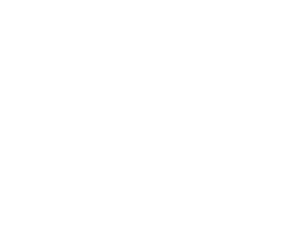
Corners (Home) ( 2 0 1 5 )
Glass, kiln casting
Dim. Variable
Photo: Koen Vrancken
|
|
|
|
|

|

|

|
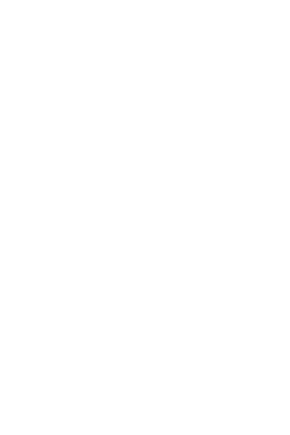
STUMP ( 2 0 0 8 )
Blown, sand-cast and enameled glass
Dim. 45 x 40 x 40 cm
Photo: Koen Vrancken
|
|
CUD ( U S )
John Drury & Robbie Miller
1960, Dayton, OH - 1955, England
STUMP was made at the Pilchuck Glass School in 2008, as assisted by gaffers David Levi and Sean Albert. As is customary with the collaborative duo of Miller and Drury, traditional techniques used in grab-bag fashion, are mixed in a non-traditional manner. Blown and sand-cast glass was combined in the hot shop to then be cooled, painted with glass enamels and re-fired; 3 technical processes, one object.
The Pilchuck Glass School is positioned on what was once a tree farm and remains surrounded by a forest and a portion of the Pacific Northwest quickly being denuded by antiquated logging practice. Making work reflective place of creation, with STUMP, CUD denounces the destructive practice of clear-cut logging so devastating the natural beauty and regenerative powers of this area so beloved by the duo; also point of genesis of the pair’s collaborative effort.
Biography
Chance, situation and unbridled humor inform non-traditional works in glass. Collaboration, concept and reflection of place enlighten the glass making processes in the creation of works and installations, displaying concerns for recycling, process and immediate circumstance.
John Drury and Robbie Miller each have more than 30 years of experience with glass and in 2008, celebrated their twenty year collaborative effort by teaching a course for the Pilchuck Glass School; their fifth. During the fall of 2009, Drury and Miller installed the exhibition
American Glass: How Soon Is Now at the William Traver Gallery, including the works completed that previous year at Pilchuck.
In 2013, Robbie and John celebrated 25 years of collaboration with a month-long residency at Canberra Glassworks in Australia and dual workshops for the University of Washington and the Pratt Fine
Art Center in Seattle, the point of genesis for the collaborative duo in 1988. Three weeks spent in Norway, during a 2014 residency marked the beginning of a new chapter for the art duo. A March residency at the Massachusetts College of Art and Design opened the 2015 engagement calendar, followed by another in May, at the
Melting Point, a new facility in Sedona Arizona and a third at the University of Texas Arlington. They will begin 2016, with a return to
New Orleans to teach a 5-day workshop for the glass facility at YaYa - a public access facility supporting underprivileged, underserved youth exhibiting talent in the arts.
To date, Mr. Drury and Mr. Miller have co-taught students from throughout the United States, Argentina, Australia, England, Japan, India, Israel, Mexico, South Korea, Norway and Guatemala.
“CUD does what it does not because it knows how, but because it wants to. They are the literal anatomy of bovine revisionism, the after taste at the end of history thrown up for our aesthetic rumination”.
Carlo McCormick
|
|
|
|
|

|

|

|
Dylan PALMER ( U S )
1975, San Francisco, CA
www.dylanpalmer.com
Somebody once said to me that “rebar can only ever be rebar”. I knew what this person meant, but I was also sure that this was a flimsy proposition. It is a material that has an immediate recognizable quality to it. Maybe for that reason, it is easy to dismiss or see creative potential in it. This also has something to do with the function of rebar. We bury it.
It’s not meant to be looked at or appreciated for its aesthetic virtues, but it is integral to the construction and definition of space; a primary concern of sculpture. These pieces might be considered exhumed structural forms, not ever intended to be covered in cement, devoid of function or implied usefulness, purely aesthetic, and still very much about the way that space is shaped and perceived.
Biography
Dylan Palmer received his BFA in glass from Illinois State University and his MFA in glass from Rhode Island School of Design. His work has been shown in New York, Chicago, Seattle, and most recently at Agency Contemporary Art in Los Angeles. Palmer was recently featured in Fabrik Magazine as one of the “8 LA Artists You Should Know”. He has also been published in Core 77 and in the Corning
Museum’s New Glass Review (on five occasions).
Palmer’s work has been described as employing a “… confounding methodology for [his] absurdist theatricality … trompe l’oeil in its most convincing incarnation…oftentimes presented in precarious or humorously impossible configurations … affording insight into Palmer’s commentary on the fragile nature of consumption, as the perception of reality can easily be shattered by means of subjectivity, ideology, and taste.” - Matthew Gardocki / Catlin Moore.
As an artist and educator, he has been invited to give talks and demonstrations at the Cornish College of the Arts, The Ohio State University, and Virginia Commonwealth University (among others). He currently lives and works in Los Angeles.
|
|
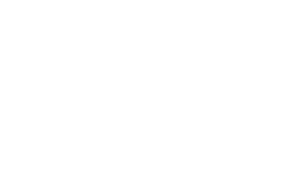
Untitled, Rebar ( 2 0 1 6 )
Cast glass
Dim. Variable
Photo: Koen Vrancken
|
|
|
|
|

|

|

|
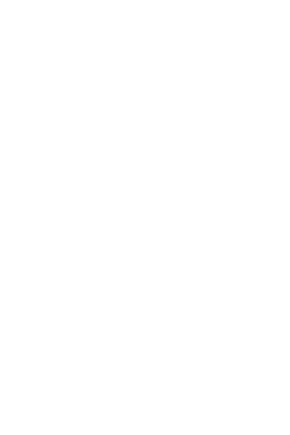
Concept for Modified Chandelier ( 2 0 1 4 )
Blown, cold-worked glass, latex paint can, vinyl tubing, ball valve, candle, monofilament
Dim. 190 x 127 x 25 cm
Photo: Koen Vrancken
|
|
Zac WEINBERG ( U S )
1986, Deering, NH
www.zacweinberg.com
If we look past the accepted functions of glass chandeliers as status symbols or light sources, one might postulate that these objects were designed as “wax-distribution systems,” intended to create abstract stalagmites on whatever happened to be positioned beneath. If this theory was accepted en masse, we could deduce that the modern addition of dripless candles or electric lights effectively chastises chandeliers, rendering them projections of a false dream.
Concept for Modified Chandelier proposes a compromise by reinstating a means of expression to an otherwise ineffectual electric bulb.
Biography
Zac Weinberg hails from a rocky outcropping on the coast of Maine, holds a BFA from the New York State College of Ceramics and a MFA from The Ohio State University. Weinberg has received numerous awards for his glass and mixed-media works including the inaugural Kanik Chung Legacy Fellowship. Weinberg currently maintains a studio and teaches at his alma mater in Columbus, Ohio.
|
|
|
|
|

|

|

|
John ROACH ( U S )
1969, San Francisco, CA
www.johnroach.net
Pearl Flask generates alchemical spectacle. The work utilizes industrially manufactured scientific glass, dry ice and stand oil to suggest a phantom heat rippling through a viscous honey-like substance. The transformation is reminiscent not only of the material transmutation of glass from solid to liquid to solid, but also the early associations between glass and alchemy and the production of precious gems from base material.
The Tactile Transducers explores the capacity of things to transmit a record, to communicate information about their creation, their function, and their destruction. This artwork, part installation, part performance asks us to consider what meaning, what story, what essence remains in matter even when it has been reduced to rubble.
What is a transducer?
It is a device that translates one form of energy into another.
A speaker, for example, is a transducer that converts electrical impulses into auditory waves, and a microphone, conversely, transforms auditory waves into electrical signals.
The Tactile Transducers explores this act of transformation and translation using glass and percussion. In this version of the project, created at GlazenHuis in Lommel, I have worked with the glass artist Eric Pipien from Ghent and the drummer Davy Deckmijn who grew up in Lommel.
The objects created for the performance reveal forms, colors and functions reflective of their user, Davy Deckmijn, and were designed in response to information gleaned from questions provided prior to my arrival in Lommel. What remains on view is the debris of his performance: shards, chunks, fragments which are displayed at the site of the event, the iconic tower at GlazenHuis. The flotsam and jetsam become a physical embodiment of the explosive event. The work also includes sound from the performance that is fed back into the tower. This audio transcription uses a number of tactile transducers - speakers that convert sound to vibration – to excite the double helix staircase that leads visitors to the top of the giant cone. Finally, the presentation includes video of the performance, projected onto the glass surface at the base of the tower.
Biography
John Roach is an interdisciplinary artist from New York. Although it is true that he received an MFA in Painting from Hunter College, his work has since spun off in multiple directions that include sound art, installation, performance and online networked collaboration. Recent activities include artist residencies at Pilchuck Glass School, New York Artist Residency and Studio Foundation (NARS), the Triangle Artists’ Workshop, and a collaborative project with Craig Dongoski at the Ionion Center for the Arts and Culture on the Greek Island of Kefalonia. His work has been shown in numerous venues in the USA and abroad, most recently in Odd Volumes: Book Art from the Allan Chasanoff Collection at the Yale University Gallery; Intangible at Leslie Heller Gallery, and Threaded Archetypes at NARS.
The Tactile Transducers Performance
John Roach & Davy Deckmijn
Glass blowing team: Eric Pipien, An-Valerie Vandromme, Nadia Matthynssens
|
|
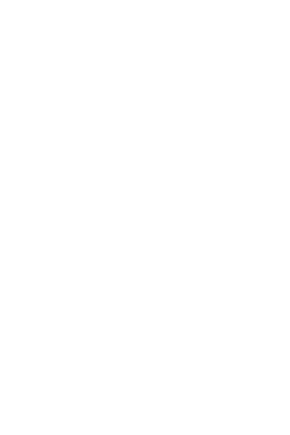
Pearl flask ( 2 0 1 5 )
Industrially produced boiling flask, stand oil, security camera, TV screen
Dim. 25 x 16 x 23 cm
Photo: Koen Vrancken
|
|
|
|
|

|

|

|
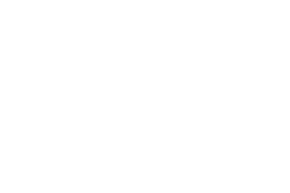
The Subjective Lens ( 2 0 1 3 - 2 0 1 6 )
Glass murrini, microscope, desk, participants drawing
Dim. Variable
Photo: Koen Vrancken
|
|
Benjamin WRIGHT ( U S )
1975, Nashville, TN
This piece was born of the intrigue of the relativity of reality in a realm of detail only sensible through man-made apparati.
Through the glass murrini technique I have transmuted the fictional, but widely accepted, textbook image of a plant cell into physical reality on the microscopic scale.
Participants are encouraged to experience the discovery, frustration and wonder of the invisible realm and render accurately their experience on paper, closing the cognitive loop and bringing to light the diversity of reality viewed through our subjective lens.
Biography
Ben Wright holds a BS in Evolutionary Biology from Dartmouth College, a BFA in Glass from the Appalachian Center for Crafts, and an MFA from Rhode Island School of Design. While at Dartmouth, he explored forests from upstate New Hampshire to tropical Jamaica to record and map song birds for the renowned ornithologist Richard
Homes. His background in Biology figures strongly in his artwork, which delves deeply into the every evolving relationship between humans and their environment. Through work ranging from interactive visual installations to sonic landscapes he engages all of his viewer’s senses and often bridges the gap between art and science. He has taught his unique approach to art making at numerous schools including Pilchuck Glass School, Penland School of Craft and the University of the Arts in Philadelphia and abroad in Germany, Turkey, Denmark and Japan and is currently the Director of Education at UrbanGlass in Brooklyn, New York.
I have developed a holistic approach to artistic expression based on my studies in the philosophy of conceptual art, the evolution of biological ecosystems, and the preservation and innovation of traditional craftsmanship. I am simultaneously awed yet paradoxically reassured by the complexity of the interlocking networks through which we swim on a daily basis. I make conceptual artworks that mine facets of our biological and cultural interrelationships for their expressive and metaphoric potentials.
By isolating illustrative interactions, I examine the clumsiness with which well-intentioned humans intervene in our poorly understood natural and constructed environments. Intellectual triggers can range from the physics of a sneeze to the psychological schism between man and beast. When seduced by a sexy scenario, I selectively conjoin elements of scientific, craft, and conceptual art practices to produce a cohesive body of work.
Regardless of the topic, I begin exploration with a thorough research of relevant knowledge from scientific data to popular myth. I initially explore my ideas through drawing and mixed media imagery work, many of which evolve into sculptures and time based visual and sonic installations. I follow obvious and absurd links across various fields of study. By pursuing correlations beyond their logical limits I guide my viewer to unexplored channels of inquiry.
|
|
|
|
|

|

|

|
Jes FAN ( H K / U S )
1990, Canada
www.jesfan.com
Two identical hair brushes are connected by threads of hair.
Attached to their conjoined double, the act of hairbrushing is removed from banality to the surreal.
Biography
Jes Fan studied Glass at Rhode Island School of Design. Incorporating techniques from various material disciplines, her work explores the intersection between art and craft. She has shown at
UrbanGlass, Brown University and Le Cadre Gallery in Hong Kong.
She is a recipient of various fellowships, such as the CCGA Flexible
Fellowship at Wheaton Arts and John A Chironna Memorial Award at RISD. Jes is currently based in New York City.
I navigate the world between categories and as such my work exists in the pliable space of inbetween-ness. Born in Canada, raised in Hong Kong and recently based in New York, I am aware that I belong to everywhere yet nowhere. Female by birth, but masculine presenting, I constantly exist in gender binaries as an other. Responding to my experiences of being in the limbo, my work is an exploration of objects that defy systems of classifications.
My practice is an inquiry into “other-ness”, and in particular the aspects of how marginal identities are often assimilated through the rhetoric of the exotic and/or the erotic. I rely on appropriating objects coveted with troupes of femininity, or objects categorized as ethnic; to question the structures that classified them as such.
|
|
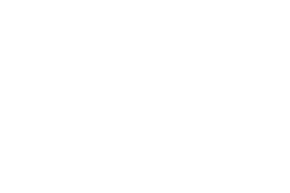
Stranded Between One Act and Another ( 2 0 1 5 )
Polished resin, hair
Dim. 10 x 33 x 20 cm
Photo: Kristof VRANCKEN
|
|
|
|
|

|

|

|
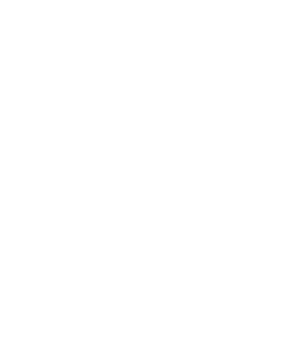
Gray Area ( 2 0 1 2 )
Retroflective fabric
Dim. 60 x 60 cm
Photo: Kristof VRANCKEN
|
|
Hillary WIEDEMANN ( U S )
1980, Chicago, IL
www.hillarywiedemann.com
Gray Area is composed of stretched retro-reflective material, a fabric embedded with thousands of glass microspheres.
The experience of the piece is distinct to the viewer’s position relative to the light and object.
Biography
Hillary Wiedemann is a Chicago-based multi-media artist. Using glass, light, reflective/refractive materials, and audio, her work explores the subtle differences between passive and active states of perception, and the transformation of light into object and experience.
She received an MFA in Sculpture from California College of the Arts, and a BFA in Glass from Rhode Island School of Design.
She is a current resident bij Hatch Projects at the Chicago Artists Coalition. She has exhibited her work in Chicago, IL; the San Francisco Bay Area; Los Angeles, CA; Kansas City, MO; and Brooklyn, NY. Additionally, she has helped to organize a variety of exhibitions, recently serving as a Co-Director of the Royal NoneSuch Gallery in Oakland, CA.
I am interested in the transience of perception and the shifts that occur between the passive and active states of experience, the moments when you are looking and then see, when you are hearing and then listen. Using controlled light, both natural and artificially produced, in combination with minimal materials, I expand the subtleties of these in-between states into larger scale installations.
|
|
|
|
|

|

|

|
Michael SCHEINER ( U S )
1956 Philadelphia, PA
www.michaelscheiner.net
Mask references a coiled organic form in a resting position that is intended to be elegant yet disturbing. Like “the calm before the storm”, Mask investigates the notion that in its serenity, it might not fully reveal potential danger lurking below its surface.
Biography
Thinly blown glass bubbles define interior and exterior space in a curious way. A delicate glass membrane encapsulates its own space while the distinction between “inside" and “outside" is softened by a minimal material presence with great visual permeability.
This image of a glass bubble got me thinking about identity in terms of degrees of separation from one's environment. How close might things be able to get to each other before they merge – shedding their individuality in exchange for becoming part of new entity. For example, the way a pair of soap bubbles shares a single, ultra-thin membrane when connected. In this binary relationship the two bubbles are so close that if the tenuous film that separates them is broken they will merge, reforming into one larger bubble. I’m intrigued by what might be the maximum possible intimacy in which multiple elements could remain separate while continuing to benefit from a close common connection. This tension between separation and commonality has influenced a number of recent projects.
Michael Scheiner is widely known for his provocative and enigmatic sculpture in glass. He has worked as an artist and educator actively exhibiting, lecturing and leading workshops internationally since
1982. He has received numerous awards and fellowships such as those from the Louis Comfort Tiffany Foundation, the Fulbright Commission and The National Endowment for the Arts. Examples of his work are included in many museum collections - among them, The Corning Museum of Glass, Hokkaido Modern Museum of Art, and the National Museum of American Art. In 1983 he joined the faculty at the Rhode Island School of Design where he taught until moving to Japan in 2004. There, as professor at Nagoya University of Arts, he developed and ran the school's Glass Department for eight years. His current status with the university is professor emeritus.
He presently resides in the US, working on projects out of his Central Falls, RI studio.
Mask ( 1 9 9 7 )
|
|
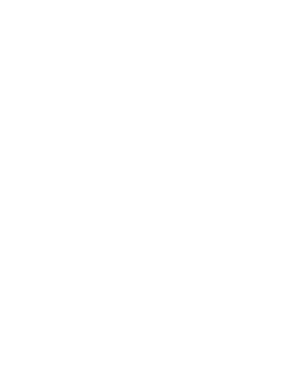
Mask ( 1 9 9 7 )
Mouth blown glass, cut and fused
Dim. 23 x 20 x 6 cm
Photo: Kristof VRANCKEN
|
|
|
|
|

|

|

|
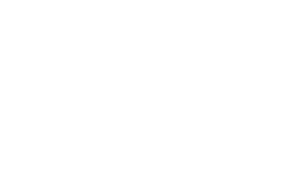
Arboreal 2 ( 2 0 1 5 )
Chestnut oak, white neon
Dim. 45 x 33 x 50 cm
Photo: Kristof VRANCKEN
|
|
Keith LEMLEY ( U S )
1981, Morgantown, WV
www.keithelemley.com
Approximately six years ago, a large Chestnut Oak tree fell on a ridge near Lemley’s studio in rural Appalachia. The trees in that area can be traced back to the early 19th century in spite of scarce nutrients and strong winds on the cliff. Lemley walked past this fallen tree nearly every day. Eventually, he began to carve the wood, exposing nearly two centuries of history. The shapes of the sculptures come from the knots, limbs, defects, and idiosyncrasies in the tree’s growth. Lemley works to reveal the underlying geometry in this natural material; he sees the cuts as a collaboration with the tree, uncovering an order and a narrative that was already there. Neon tubes act as extensions of the wooden, gemlike forms. The lines of light become drawings in three-dimensional space, exaggerating shapes, drawing attention to characteristics of the wood, and imagining what could have been if the tree continued to grow and expand. The neon is a counterpoint to the wood formally, materially, and conceptually.
Although the neon is light itself, it becomes a ghost of the carved wood. Together, the heavy wooden forms and the delicate, yet powerful, neon create an immersive installation for viewers, recreating the wonder Lemley feels when reading about a new scientific discovery or taking a walk through the woods.
Biography
Always interested in scientific research connecting disparate parts of the universe through underlying geometry, Lemley has become known for large-scale, angular neon installations that unify spaces through light, color, and line. More captivating than the actual geometric theories is the process of experimentation and discovery shared by scientists and artists alike. Lemley is intrigued by the next set of questions each installation poses and the challenge of uniting materials, light, and architecture within each exhibition.
Keith Lemley is an installation artist who lives and works in Kent, OH and Core, WV. He received his MFA from the University of Wisconsin, Madison, in 2010. Since graduation, he has had solo exhibitions every year at venues including Mixed Greens (NYC); 1708 Gallery (Richmond, VA); Redux Contemporary Art Center (Charleston,
SC); The Soap Factory (Minneapolis, MN); the Urban Institute for
Contemporary Art (Grand Rapids, MI); Complexe Guy Favreau (Montreal,
Canada); Summerhall (Edinburgh, United Kingdom); Smith
Center for the Arts (Providence, RI); ROY G BIV Gallery in Columbus,
OH; and Pittsburgh Center for the Arts (Pittsburgh, PA). He has an upcoming solo exhibition the UW-Milwaukee Union Gallery in Milwaukee, WI in 2016.
|
|
|
|
|

|

|

|
Chad STATES ( U S )
1975, Everett, WA
www.chadstates.com
I was trained as a photographer and I consider Shimmer of Possibility to be a form of photograph. The piece plays off ideas of searching and collecting inherent to the photographic process but instead of searching and imaging found objects out in the world, I searched and collected for materials in the landscape to present as an object. Instead of a mediated act, it is a physical act of acquiring and presenting.
The shattered glass in this piece are remnants from both car accidents and the windows of cars that have been broken into that were sourced from my neighborhood in Philadelphia.
The indexical traces of these violent and aggressive acts are then transformed into beautiful shimmering jewels with the transformative aid of light.
Biography
Chad States holds an MFA from Tyler School of Art and a BA from Evergreen State College. He is a member of Vox Populi and has been included in exhibitions at ClampArt, New York, NY; Blue Sky Gallery, Portland OR; Napoleon, Philadelphia PA; Hous Projects, New York NY; Randall Scott Gallery, Brooklyn NY; Greg Kucera Gallery, Seattle, WA; Photographic Center Northwest, Seattle, WA; Philadelphia Photo Arts Center, Philadelphia, PA; and Delaware Center for the Contemporary Arts, Wilmington, DE. His book Cruising was published in the fall of 2011 by Powerhouse Books which was short listed as one of the best new photobooks in 2012 by Aperture Foundation and Paris Photo. He was an Artist in Residence at the Philadelphia Photographic Arts Center in 2013 as well as with Light Work in 2009.
|
|
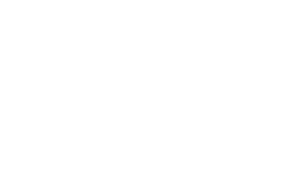
Shimmer of Possibility ( 2 0 1 5 )
Shatter glass, light stand
Dim. 120 x 60 x 60 cm
Photo: Kristof VRANCKEN
|
|
|
|
|

|

|

|
Trish ROAN ( A U )
1985 Kaosiung, Taiwan
This piece is a record of an event over time. I am drawn to the fact that the same thing can occupy different spaces, like the condensed core of a star and the distance its light travels. I started dipping an object in layers of wax. As this repeated action progresses, it wants to round out, become uniform. Over time, an original form is lost to a pure form.
I was thinking about a process of loss or obliteration over time, about the rounded edges of memory, and about how pearls are made. I like the idea of an accumulation upon one point as a measure of time, and the transformations that occur over its passage. Something fragile and translucent becomes impenetrable and dense when it repeats itself enough. Separating the layers makes it possible to trace the echoes of an event.
Biography
Trish Roan works across various interests including object-making, site-specific installation, light, sound and animation. Her practice lies somewhere in the margins of crude science and everyday miracles, with a particular fascination for questions of time, immateriality and shifting states of awareness in absolutely ordinary situations.
Trish graduated from the ANU Glass Workshop, Canberra, in 2006 and spent years working as an assistant to many talented and diverse glass blowers in the Australian community. She has exhibited in various locations in Australia and abroad, working on projects in Canada, Sweden and Scotland. Trish has been an Artist-in-Residence at Sydney College of the Arts, The Tree Museum (Canada), Alberta College of Art and Design, Canberra Glass Works, North Lands Creative Glass, Tomma Rum (Sweden) and ANU School of Art. Trish is currently based in Melbourne, Australia.
|
|
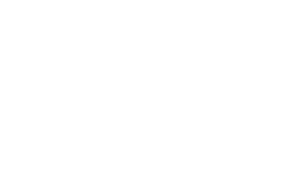
Pearl ( 2 0 0 6 )
Glass, Lost wax casting
Dim. 4 x 7 x 23 cm
Photo: Kristof VRANCKEN
|
|
|
|
|

|

|

|
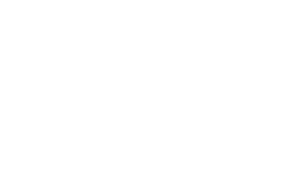
Blown glass, wood, acrylic, 17 channel color video with sound (1 minute 20 seconds).
Dim. 110 x 223 x 50 cm
Photo: Kristof VRANCKEN
|
|
Bohyun YOON ( K R / U S )
1976, Seoul, Korea
www.bohyunyoon.com
Glassorganism (2013) is a remake of a Japanese historical glass toy called "Popen,” which is a noisemaker made of glass. I am particularly interested in the flexibility of the glass surface creating interchangeable concave and convex lens. These transformative lens can also create organic light projections on the wall while light is focused on the vibrating glass membrane. Thus, thru using “Popen,” as an instrument of both light and sound, I compose a video that displays the proliferation of microorganisms, the interaction of various luminous sea creatures, or even the impact explosions of the stars in the cosmos.
Biography
I have always been fascinated by the vibrating sound of glass caused through physical alterations, and this led me to experiment with making glass more visible through sound. Light, shadow, reflection, and sound are non-physical and hold no mass. These elements seem comparable to a human’s life, and this awakened my interest in this field and informed the concept of these works.
It has been said that long ago those residing in Buddhist temples made wind chimes in order to “see” the wind. This idea of finding methods to make the invisible visible is very appealing to me. In my performances, carefully planned movements create singular, unique sounds from glass.
Born in Korea in 1976 and currently living in Richmond Virginia, Bohyun Yoon is an assistant professor at Virginia Commonwealth University. Yoon is interested in the invisible properties of glass (transparency, refraction, and distortion), and continuously explores ways of making those properties visible. These invisible but real properties of glass are an appropriate medium to explore hidden aspects of societal conventions and stereotypes. His exploration of invisibility through glass has also been extended to various mediums such as mirrors and light. He exposes socially constructed notions of race, class, and gender by combining images of the human body with materials that possess invisible properties.
Yoon received MFAs from both Rhode Island School of Design &
Tama Art University, participated in the fellowship programs at the Kyoto University of Art and Design in Japan and the Center for Emerging Visual Artists in Philadelphia.
He has exhibited his works in the Museum of Arts and Design New
York, Renwick Gallery, Washington D.C., Shelburne Museum Vermont,
Contemporary Arts Museum Houston, Brattleboro Museum Vermont, Hunter College New York, and Chungju International Craft Biennale in Korea. His work is in the collection at Smithsonian American Art Museum, Song Eun Art
|
|
|
|
|

|

|

|
Lika VOLKOVA ( U A / U S ) &
Caroline WOOLARD ( U S )
1978 Ukraine - 1984, Jamestown, RI
www.sans.name - www.carolinewoolard.com
The first Work Dress, available for barter only, was traded for basic needs for five years. The dress also served as a test project that led to the creation of OurGoods.org, a resource sharing network for artists, activists, and craftspeople that is used by over 7,000 people in New York City. The Work Dress 2.0, shown here, is a collaboration between Volkova and Woolard as an exchange with Hyperopia Projects. In this work, the dress reveals the conditions of its own production.
Collaboration
The objects we make cannot be disentangled from their economic and social lives. Our Work Dress is available for barter only. Woolard's Statements increase in price according to student loan rates.
Artists Report Back is made by BFAMFAPhD, a group which you can contribute to. We understand art as mode of inquiry that expands beyond exhibition and toward life cycle; from display to production, consumption, and surplus allocation. We begin each project with an invitation. We facilitate an experience. A group gathers. The project becomes a group effort, and the objects multiply. The objects are known in the group and shown much later.
We make no distinction between need and desire. Do not ask us about function. Ask us about revelation, about social imagination, about a religion of labor. Art is a way to make meaning of the labor we claim for ourselves. Art is a practice of failed pleasure and pleasurable failure. If we make meaning, not money, what do we do with all the work we make and then hate? Most of us labor elsewhere to pay our rent. Can we trade labor for labor, work for work?
Biography
Lika Volkova
Working in the legacy of critical design and collective production,
Lika Volkova brings a dark humor forged in a childhood spent collecting cigarette butts in the USSR to a lingering hope for communitarian subjectivity. Since 2008, she has produced functional sculptures for SANS, a line that incorporates free pattern distribution and system design. Born in Odessa, Ukraine, 1978, upcoming
exhibitions and projects include New Economic Policy at The Luminary and a secret project.
Caroline Woolard
After co-founding and co-directing solidarity economy platforms OurGoods.org and TradeSchool.coop from 2008-2014, Caroline Woolard is now focused on BFAMFAPhD.com, an initiative to raise awareness about the impact of debt, rent, and precarity on culture and the New York City Real Estate Investment Cooperative, to secure permanently affordable space. Born in Providence, 1984, upcoming exhibitions and projects include Free / Libre / Open Systems and Art at Cornell University and a documentary with PBS / Art 21 New York Close Up.
|
|
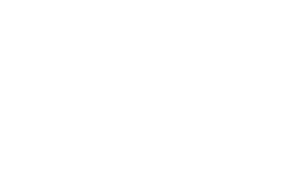
Work Dress 2.0 ( O N G O I N G )
Barter agreement, cotton, Kevlar, tubing
Dim. 120 x 60 cm
|
|
|
|
|

|

|

|
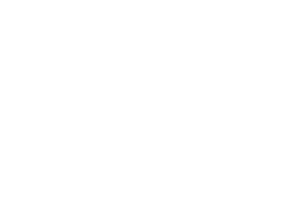
Floating with an Iceberg II ( 2 0 1 6 )
79°34'N, 11°03'E, the Arctic, Svalbard, Norway
Video
|
|
Carina CHEUNG ( U S / I T )
1984, Hong Kong
The video captures a moving iceberg and the artist floating in harmony in the Arctic waters. This is part of a series of floats that illustrate the meditative journey of conquering physical limitations of the body. This is an ongoing investigation of the self and our relationship with our dynamic and ever-shifting environment.
Biography
Carina Cheung is an interdisciplinary artist whose life’s projects explore the intangible process of human evolution as a means to reach a higher state of consciousness. Cheung’s search to understand and find connections among various facets of life allows her to highlight the essence of objects, transcend the everyday physical, and draw attention to the importance of our relationship to nature.
Her studies and work with glass as a malleable material enable her to illustrate her scientific and ar tistic research into sculptures.
Since receiving a BFA in Glass from Rhode Island School of Design in 2006, her fascination and deep reverence for glass as a material has propelled her to circumnavigate the earth to discover the traditions and unspoken nuances of glassmaking in places such as Murano, Italy and Firozabad, India, during the Jacques and Natasha Gelman Fellowship (2006-2007), and the Fulbright Fellowship (2007-2008) to study sculpture in Shandong Province, China. She is a recipient of several fellowships and artist residencies including the Jerry Raphael Metropolitan Contemporary Glass Group Fellowship, the Arctic Circle, the Creative Glass Center of America, and the Pilchuck Glass School. Cheung has exhibited internationally, most notably at Robert Lehman Gallery, New York, NY (2008), Ca’Pesaro, The International Gallery of Modern Art, Venice, Italy (2009-2010) and InMurano Association, Murano, Venice, Italy (2015). Her work will also be included in the upcoming travelling exhibition Lifeforms 2016. She currently lives and works in New York and Murano, Italy with her partner and frequent collaborator Pino Signoretto since 2009.
|
|
|
|
|

|

|

|
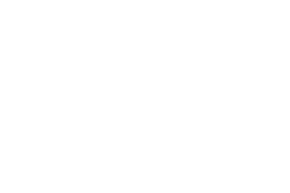
Flow of Light ( 2 0 1 3 )
Video, glass
Dim. variable
Photo: Kristof VRANCKEN
|
|
Hiromi TAKIZAWA ( J P / U S )
1978, Nagano, Japan
www.hiromitakizawa.com
I am interested in the ephemeral/intangible quality of light and the transparent quality of glass. Parallel to the curiosity, I attempted to explore the natural fluidity of water and solidity of glass in this work. This video captured the flickering of the sunlight that reflects off the water in the waterfall though the glass lens of an old camera. As water flows, specks of light briefly appear. The bouncing water is captured in the moment of falling water from a cliff and hitting the rocks. The muse that I discovered in a nature through a glass lens in microscopic level, I wanted to capture the moment and share it with viewers. Filmed in the wilderness in Nagano, Japan.
Biography
Hiromi Takizawa was born and raised in Nagano, Japan and lives in southern California. Curiosity, experimentation, narrative, and materiality are the core concepts in her work. Her experience of living in dual cultures influences a larger part of her work. Her work has been exhibited nationally and internationally including solo exhibitions at Heller Gallery and Urban Glass in New York, and group exhibitions in Ohio, Michigan, Virginia, and Bergen, Norway. Hiromi earned her M.F.A at Virginia Commonwealth University, and she also studied at California State University, San Bernardino. She was the youngest artist included in Urban Glass Art Quarterly’s 50 at 50, a list of the top fifty artists using glass that will be relevant in the next half century.
|
|
|
|
|
|
|

GlazenHuis, Whereabouts, 2016
Photo: Kristof VRANCKEN
|
|
|
|
|
|
|
Programma
Programma / Program
27 03 2016 - 04 09 2016 exhibition WHEREABOUTS
26 02 2016 - 05 03 2016 residency John ROACH
03 03 2016 performance by John ROACH and percussionist Davy DECKMIJN
26 03 2016 - 29 03 2016 masterclasses HYPEROPIA PROJECTS
26 03 2016 performance by Matthew C. SZÖSZ and Alexander ROSENBERG
|
|

|
Click here to download the file "_LR_GH.WHEREABOUTS.Catalogus.210x280_2.pdf".
|
|
|
|
|
|
|
|


